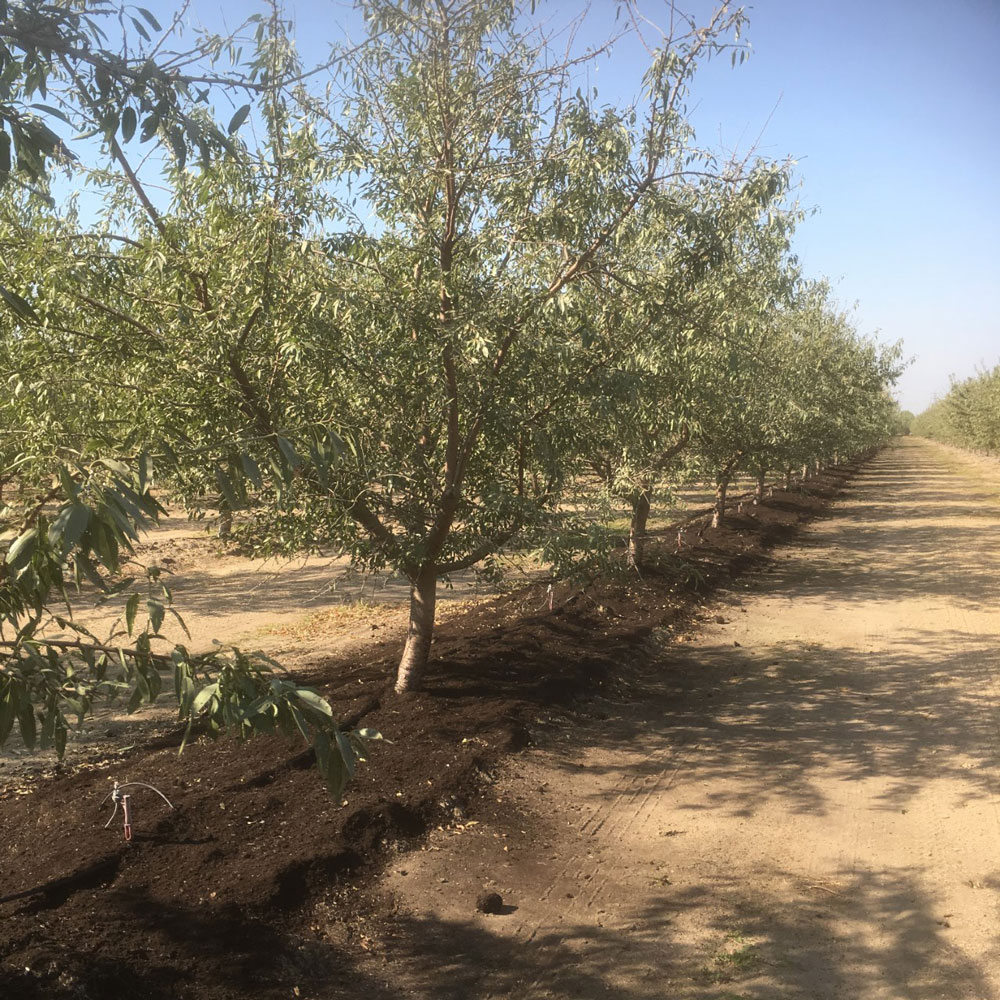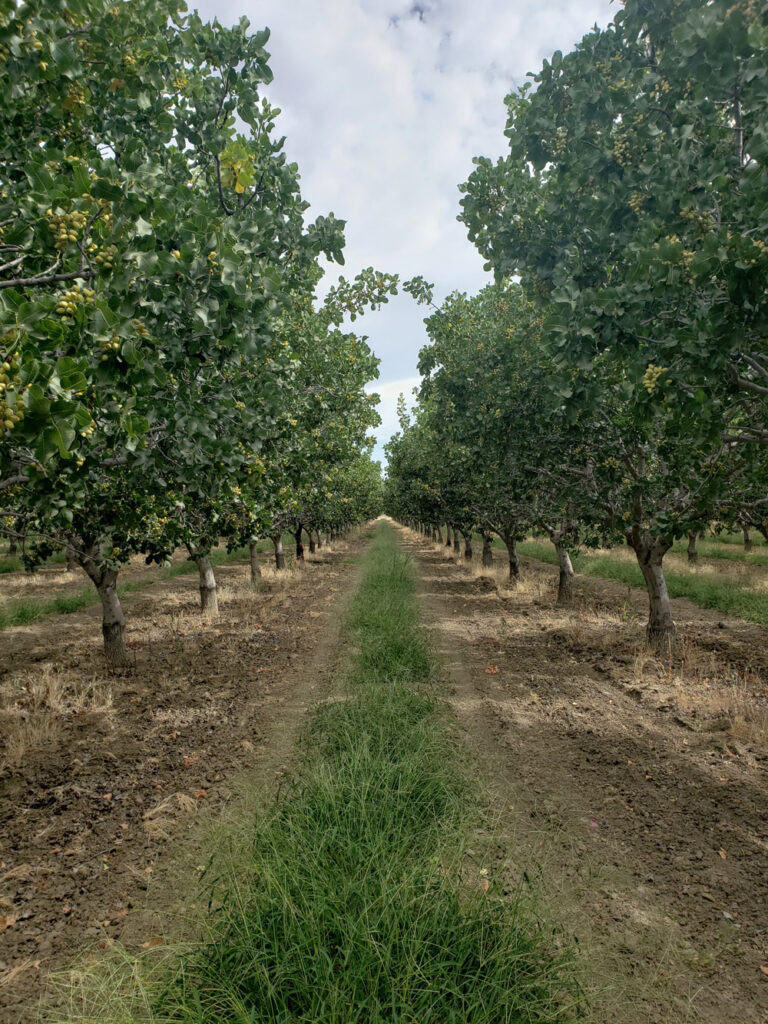
As crop advisors and farmers, we are constantly trying to find the magic tricks to growing crops and maximizing yields. We discuss the timing of nutrient and crop protection applications. We hold open forums at coffee shops before the crack of dawn on how to properly irrigate at a specific time of the year and for a specific reason. And we aspire to get to a metaphysical level of understanding of how to make 17 nutrients work in perfect Zen harmony to create the perfect crop, for less. On occasion, someone strikes the gong and we are brought back from our tantric meditational fixation of all things nutrition to realize a plant is 96% carbon, hydrogen and oxygen. The other 17 elements play an important part of trying to making those three elements work. And it isn’t cheap.
A plant is 23% lignin, 40% cellulose and 33% hemicellulose. Without getting deep into the chemical weeds here, think of lignin as the structure of a plant. Lignin is very insoluble, a very heterogenous polymer of phenols. Its diversity allows it to become a very stable part of a plant. Picture it mostly as the bark. Cellulose is the more malleable carbon molecules that build the original structures of cells. If we were to think of them as a building, cellulose would be the 2x4s that create the original structure. Lignin would be the plywood sheathing and stucco. All the plumbing and electrical would be the hemicellulose. They are more specifically functioning structural parts of a plant with other functions like carrying water and electricity. So what?
Maximizing Carbon
The “what” is all of these structural chains of molecules and functional groups are held together by carbon. How can we increase our carbon usage and save money on inputs and water at the same time? Carbon. Sugars, starches, fats, oils and phenols all make up the “organic” part of chemistry. They are “carbon-based”. Our focus in plant nutrition is to get a plant to be very efficient at manipulating carbon dioxide and water to create food. If we think of carbon like the kids toys of yesterday, “Jacks”, we see the attachment points that allow carbon to grab onto other elements. Carbon is what makes life work. Fats, sugars, food and structure all come from different formulations of a plant using water and CO2.

I wanted to point all that out because the meat and potatoes of our crops are three elements: C, H and O. We help manipulate those three elements by adding at least 17 other nutrients to the mix to make it all happen. If we add too much of a specific nutrient, say manganese, that contributes to an overabundance of an enzyme, say pyruvate carboxylase, and we go too heavy on specific reactions like energy production. In enhanced energy production, we may use up our phosphorus reserves more quickly making ATP and not have enough when specific processes need to happen after bloom when P demand is high. Now in layman’s terms. Let’s say we go heavier on coffee in the morning than usual. Alertness increases, fats get burned, sugars get burned, heart rate increases, and then we crash before lunch. Action and reaction. The same thing happens with our macronutrients. When we apply too much N, P, K, Ca and even Mg or S, the process can go into hyperdrive. How many times have you seen solid growth in an orchard only to have mediocre yields? Big trees, no nuts. We went vegetative instead of producing fruit. If we focus more on providing carbon with our inputs, we should be able to stabilize our production and even reduce our inputs of other nutrients and water.
What inputs can we manipulate to maximize carbon?
Compost
We can apply compost to soils after harvest and in the spring. It’s best to incorporate it onto the soil to avoid excess volatilization. Compost will also enhance the diversity of our soil biome as well as feed it. It is important to source a quality mature compost. If you open the truck or pull the tarp and it wreaks of ammonia, send it back.
Green Waste
Growing cover crops can add many more tons of material to a field and increase deep carbon incorporation with root structures. Cover crops can greatly increase the organic matter in soil, reduce temperatures on soil surfaces and stabilize soil structures.
Leonardite
We can spread leonardite directly onto our fields to increase organic matter. Leonardite is highly stable and a rich carbon source. It will take longer to break down, so don’t expect immediate, dramatic results; however, continual applications can enhance soil organic matter and add structure. Oftentimes, we add an array of sugars to our NPK inputs. These carbon chains allow nutrients to increase their absorption, to “chelate” nutrients, and become a slower release molecule. Organic acids, such as humic and fulvic, are a great way to increase soil organic matter. These forms are more expensive as they skip the middle man. Leonardite and compost breakdown further to humic acids and then to fulvic acids. Adding those acids directly costs more as someone already refined , but they get to work immediately.
The Extra Benefits
A 1% increase in soil organic matter will hold 20,000 gallons more water per acre. If you have 140 trees per acre, that’s 140 more gallons potentially stored in the root zone each irrigation. In California, that may be the game changer as to whether we can farm or not with no surface water deliveries. Extra carbon in the soil feeds the microbiology that lives there. And as those organisms live, breathe and die, more stable carbon can be stored in our soil. As they feed on carbon sources, the nutrients consumed with them are also stabilized and exchanged with plants for root exudates. This symbiotic relationship can actually perpetuate itself. Increasing our carbon sources will also allow us to make more sugars and oils. An almond sitting on an orchard floor and drying out will weigh less if its initial water content was way higher than its oil content. We can increase yields.
Everything we do with our essential nutrients are all in an effort to increase the amount of energy we harvest in the food we produce. That energy is mostly C, H, and O. Gentle, balanced manipulation of those elements will not only save us some money, but allow our trees to produce our crops in a more healthy fashion. Saving money on water and nutrition this year may just be the key to saving farming in the west.















